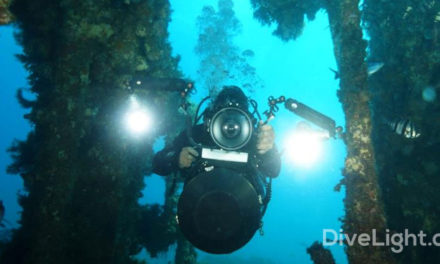Cave diving dive light is a light source used by cave divers that illuminates the waters in a cave. This lights can be carried by both scuba divers and surface supplied divers. In the case of scuba divers, the dive light is a self-contained light that has its own battery for power supply. This is contrary to self-contained divers who carry dive lights powered by manual supplies, that is, use of cables connected to an external power source. This dive light is used by divers both for professional causes like research works and unprofessional reasons like recreational purposes. Dive lights come in many forms. This forms include the head mount, the surface supplied, the hand held and the canister.
The voltage released by a cave diving dive light is largely dependent on the power source. This can range from 1.2 voltage from a NiMH cell to 12 voltage from a lead acid accumulator. However, extremely high voltage is not used as a safety measure. In addition to that, surface powered helmets can be able to light up to 24 to 36 power voltage from the external source of power. This is because the external power source will of course have a high voltage battery compared to a single NiMH cell in a head mount dive light. The voltage released will highly depend on the mission of the cave diver. The deep the cave diver is, the more the light needed.
There are a number of switching devices that are used on cave diving dive lights. This include magnetic switches, toggle switches, internal switches that are operated by modelled external levers and spring loaded spring buttons. All this different types of switches work for a common goal of illuminating the waters. However, precautions held are different from one switch type to the other.
Dive lights have three major uses. The first is the primary use which is the major reason that entails lighting the waters for a clear view. Dirty waters require high voltage light while clean waters in most cases will receive enough light from an average powered cave dive light. Another use of a cave diving dive light is for backup reasons. As published by Sheck Exley in 1977, cave divers are compulsorily required to carry at least three dive lights for a single dive. The extra two dive lights act as a backup for use if the primary dive light fails. This is purely for safety purposes. The third function is for the video lights. These are for special operations that involve video shooting. They discharge 600-8000 lumens and can run for 45-50 minutes.
Cave diving dive lights have been in use from early 20th century. They have evolved from the early light sources that used dry cells and had no reflectors to the modern dive lights that use alkaline batteries, zinc-carbon batteries, lead-acid batteries and lithium-ion batteries leading to extremely high light output. Cave divers owe their safety to the dive lights.




